Quadratura is a type of illusionistic painting that interacts with a building’s architecture, often extending or altering the actual appearance of the architecture. Popular with Baroque artists, it is similar to other illusionistic techniques such as trompe-l’œil, although it tends to refer more to the “opening up” of architectural space and to a more thorough integration with surrounding sculptural and architectural elements (Feinblatt 1-3; for all sources, see Trombone History Bibliography.)
A few of the most intriguing pictures in the Trombone Timeline are from artists known as quadratura painters, and their trombone images do appear to demonstrate elements of that technique. It is noteworthy that the paintings originate from the first half of the 17th century, a period of time particularly replete with trombone images.
The first is the set of Colonna and Mitelli paintings on the walls and ceiling of the salone of the Palazzo Ducale in Sassuolo, Italy, dating from 1646-47. One of the images depicts a group of four musicians playing from a “fake” balcony (see above), while another shows a group of three musicians performing from a separate false balcony (see below) (Southorn, front jacket; Sala della Guardia, Palazzo Ducale, Sassuolo). Note some of the nice details of the illusion, such as the trombone slide and sheet music extending into the space beyond the balcony, as well as the lute player hanging his leg over the railing.
A ceiling fresco from the same room of the palace is meant to provide the illusion of a cluster of angels (including, of course, an angel-trombonist) as viewed through an opening in the ceiling (see below) (Pirondini 251).
The other prominent quadratura painter represented in the Trombone Timeline is Lionello Spada (Feinblatt 42). His ceiling fresco, dating from 1615, is located in the cupola of Reggio Emilia’s Chiesa della Ghiara, only a few miles from the ducal palace of Sassuolo discussed above. It depicts numerous angel-musicians, including angels playing trombone, harp, recorder, triangle, tambourine, cornetto, lute, and violin (see below) (Artioli, plate 8). Like the ducal palace ceiling, Spada’s fresco is meant to provide the illusion of architecture opening to a view of angels in the sky above. The cupola also shows false architectural elements, such as ribs of the dome and the decorative bronze cartouches around each angel-musician, interacting with real architectural elements and false sculptural elements (Feinblatt 42).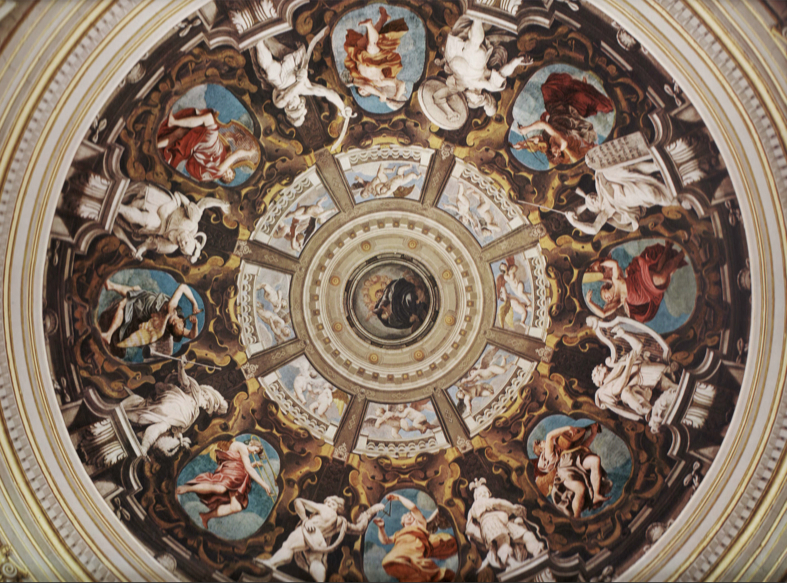
Finally, closer views of the trombone player (below) and recorder (bottom image, below) reveal some of the fresco’s beautiful artistic details (Artioli, plates 11 and 12).
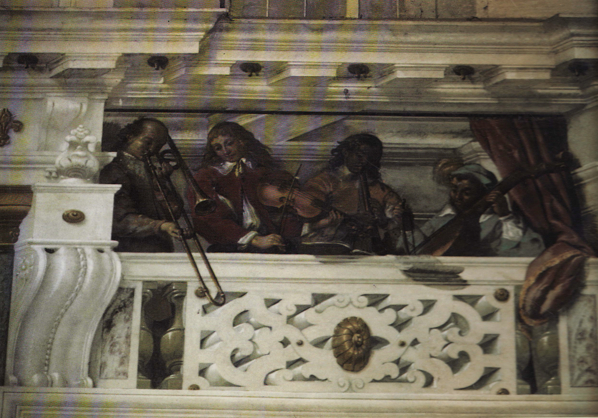
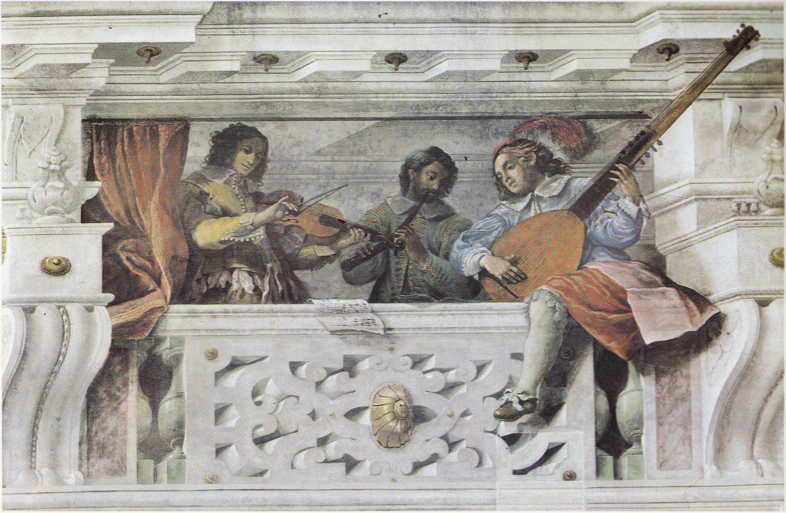
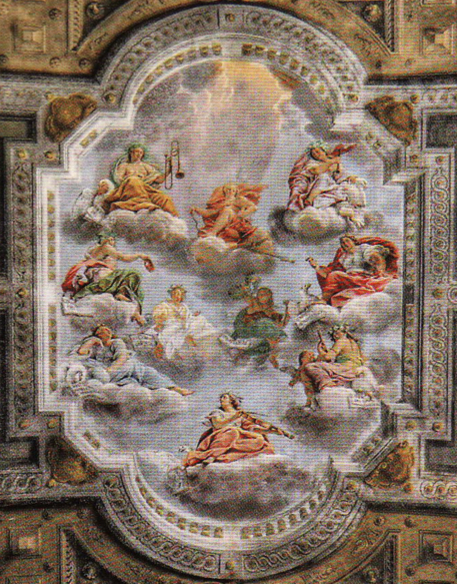
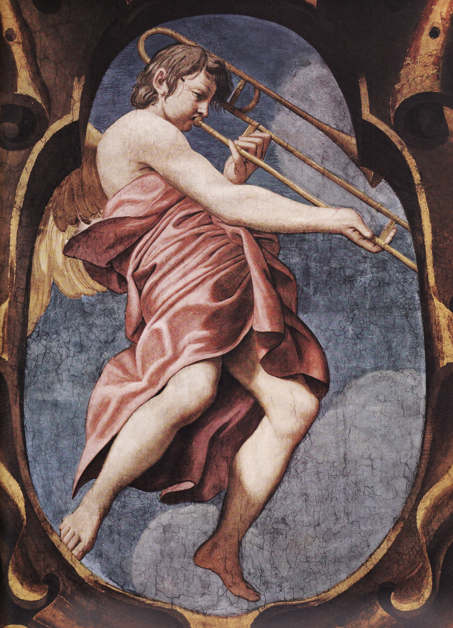
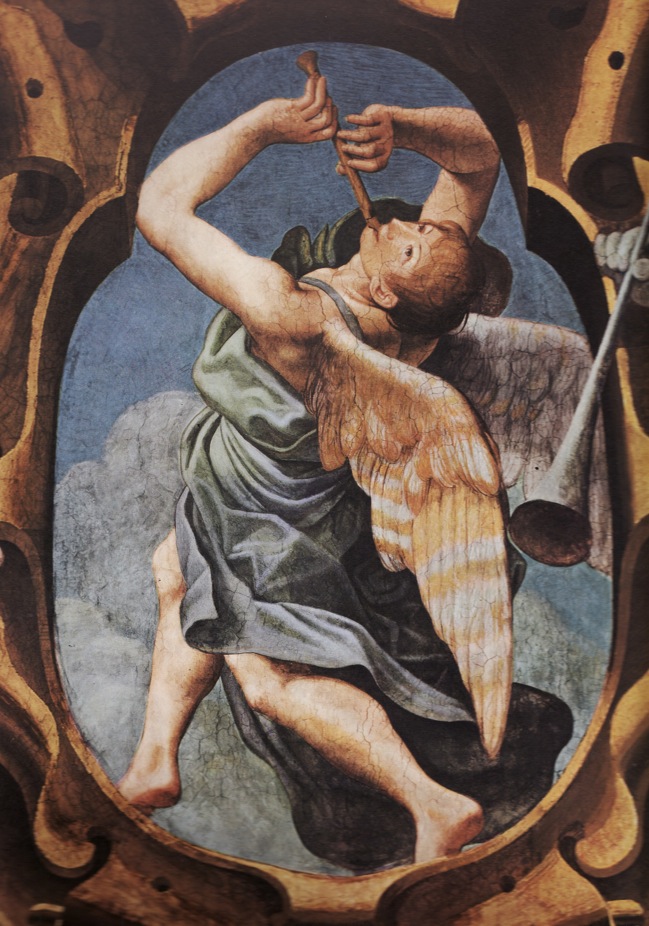
J Reeves
Trying to hold up a towel with my right elbow would restrict me to third position at the most. Maybe the angel has a long arm. I can show both these paintings to my 3-4 and 5-6 classes and play “Spot the Error”.
wkimball
Good point! Just one of the hazards of playing trombone while wearing a towel/toga! See also the lower image here.